Experimental Investigation on Hydraulic Fracture Propagation of Carbonate Rocks under Different Fracturing Fluids
Abstract
:1. Introduction
2. Experimental Materials and Procedure
2.1. Sample Preparation
2.2. Test Equipment
2.3. Experimental Methods
3. Results of the Fracturing Tests
3.1. Fracturing Pump Pressure and AE Characteristics
3.2. Fracturing Pump Pressure and Radial Strain
3.3. Failure Mode and CT Characteristic
4. Discussion
5. Conclusions
- (1)
- For fractured carbonate reservoirs, different fracturing fluids had different fracturing capacities. Under the condition of same fracturing fluid, the pump flow rate mainly affected the fracturing breakdown pressure and had little effect on fracture morphology.
- (2)
- The viscosity of fracturing fluid had a significant effect on fracturing breakdown pressure. Under the same pump flow rate, the fracturing breakdown pressure of slick water was the lowest. The fracturing fluid with low viscosity could easily activate weakly natural fractures or filled fractures, leading to open microcracks, and could effectively reduce fracturing breakdown pressure. This was also helpful in increasing the complexity of fracturing fracture.
- (3)
- The fracturing pump pressure had a good correspondence with acoustic emission hits and changes in radial strain. Acoustic emission signals accompanied the initiation and propagation of pressure fractures in hydraulic fracturing. Large fracturing cracks caused abrupt changes in the radial strain of the specimen; for every drop of fracturing pressure, the AE hits and radial strain were mutated.
- (4)
- The width of the main fracturing fracture was affected by the viscosity and pump flow rate. Under the same conditions, the maximum changes in radial strain at the fracturing breakdown pressure point occurred when the fracturing fluid was guar gum.
- (5)
- One main fracturing fracture was observed on the surface with gelled acid and cross-linked acid fracturing. The extension of the fracturing was mainly focused near the crack initiation parts. The crack expanded asymmetrically; the wormhole was dissolved to break through to the surface of the specimen.
- (6)
- Acid fracturing fluid had little effect on the fracturing pressure and fracture morphology during the fracturing process. However, the dissolution of gelled acid solution could increase the width of fracturing crack and improve the conductivity of carbonate reservoirs.
Author Contributions
Funding
Conflicts of Interest
References
- Arthur, J.D.; Bohm, B.; Layne, M. Hydraulic fracturing considerations for natural gas wells of the Marcellus shale. In Proceedings of the Ground Water Protection Council, Cincinnati, OH, USA, 21–24 September 2008. [Google Scholar]
- Hou, P.; Gao, F.; Ju, Y. Experimental investigation on the failure and acoustic emission characteristics of shale, sandstone and coal under gas fracturing. J. Natural Gas Sci. Eng. 2016, 35, 211–223. [Google Scholar] [CrossRef]
- Du, C.Z. Study on Theoretics of Hydraulic Fracturing in Coal Bed and Its Applications. Ph.D. Thesis, China University of Mining and Technology, Xuzhou, China, 2008. [Google Scholar]
- Huang, B.; Liu, C.; Fu, J. Hydraulic fracturing after water pressure control blasting for increased fracturing. Int. J. Rock Mech. Min. Sci. 2011, 48, 976–983. [Google Scholar] [CrossRef]
- Chitrala, Y.; Moreno, C.; Sondergeld, C.; Rai, C. An experimental investigation into hydraulic fracture propagation under different applied stresses in tight sands using acoustic emissions. J. Pet. Sci. Eng. 2013, 108, 151–161. [Google Scholar] [CrossRef]
- Huang, B.X. Research on Theory and Application of Hydraulic Fracture Weakening for Coal–Rock Mass. Ph.D. Thesis, China University of Mining and Technology, Xuzhou, China, 2008. [Google Scholar]
- Bohloli, B.; de Pater, C.J. Experimental study on hydraulic fracturing of soft rocks: Influence of fluid rheology and confining stress. J. Pet. Sci. Eng. 2006, 53, 1–12. [Google Scholar] [CrossRef]
- Casas, L.A.; Miskimins, J.L.; Black, A.D.; Green, S.J. Laboratory hydraulic fracturing test on a rock with artificial discontinuities. In Proceedings of the SPE Annual Technical Conference and Exhibition, San Antonio, TX, USA, 24–27 September 2006. [Google Scholar]
- Zhou, J.; Jin, Y.; Chen, M. Experimental investigation of hydraulic fracturing in random natural fractured blocks. Int. J. Rock Mech. Min. Sci. 2010, 47, 1193–1199. [Google Scholar] [CrossRef]
- Matsunaga, I.; Kobayashit, H.; Sasaki, S.; Ishida, T. Studying Hydraulic Fracturing Mechanism by Laboratory Experiments with Acoustic Emission Monitoring. Int. J. Rock Mech. Min. Sci. Geomech. Abstr. 1993, 30, 909–912. [Google Scholar] [CrossRef]
- Guo, T.; Zhang, S.; Qu, Z.; Zhou, T. Experimental study of hydraulic fracturing for shale by stimulated reservoir volume. Fuel 2014, 128, 373–380. [Google Scholar] [CrossRef]
- Zhou, J.; Chen, M.; Jin, Y.; Zhang, G.Q. Experiment of propagation mechanism of hydraulic fracture in multi-fracture reservoir. J. China Univ. Petrol. (Ed. Nat. Sci.) 2008, 32, 51–54. [Google Scholar]
- Zhou, J.; Chen, M.; Jin, Y.; Zhang, G.Q. Analysis of fracture propagation behavior and fracture geometry using a tri-axial fracturing system in naturally fractured reservoirs. J. Rock Mech. Min. Sci. 2008, 45, 1143–1152. [Google Scholar] [CrossRef]
- Palchik, V. Mechanical Behavior of Carbonate Rocks at Crack Damage Stress Equal to Uniaxial Compressive Strength. Rock Mech. Rock Eng. 2010, 43, 497–503. [Google Scholar] [CrossRef]
- Fernø, M.A.; Haugen, Å.; Graue, A. Wettability effects on the matrix–fracture fluid transfer in fractured carbonate rocks. J. Pet. Sci. Eng. 2011, 77, 146–153. [Google Scholar] [CrossRef]
- Jian, Z.; Mian, C.; Yan, J. Experimental study on strength reduction effects of limestone near fracture area during acid fracturing. Chin. J. Rock Mech. Eng. 2007, 26, 206–1210. [Google Scholar]
- Deng, G.Z.; Wang, S.B.; Huang, B.X. Research on behavior character of crack development induced by hydraulic fracturing in coal-rockmass. Chin. J. Rock Mech. Eng. 2004, 23, 3489–3493. [Google Scholar]
- Chen, L.H.; Chen, W.C.; Chen, Y.C.; Benyamin, L.; Li, A.J. Investigation of hydraulic fracture propagation using a post-peak control system coupled with acoustic emission. Rock Mech. Rock Eng. 2015, 48, 1233–1248. [Google Scholar] [CrossRef]


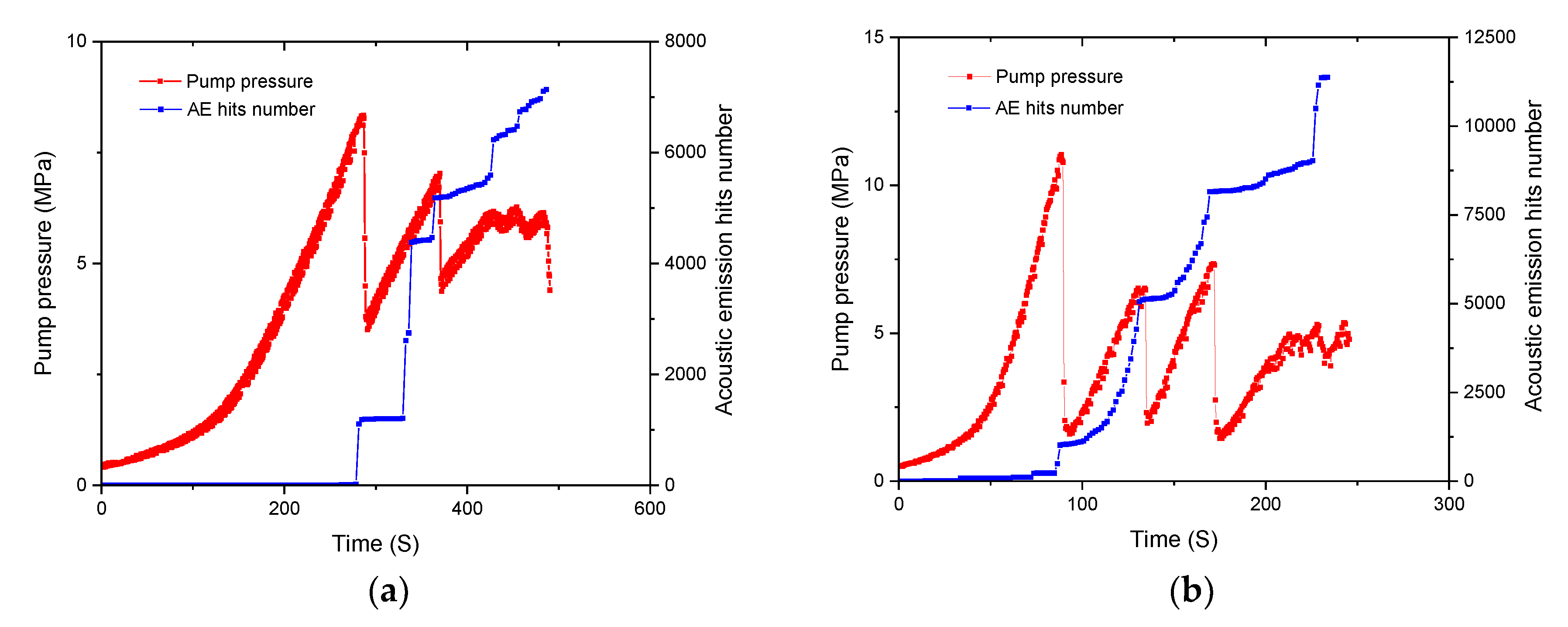


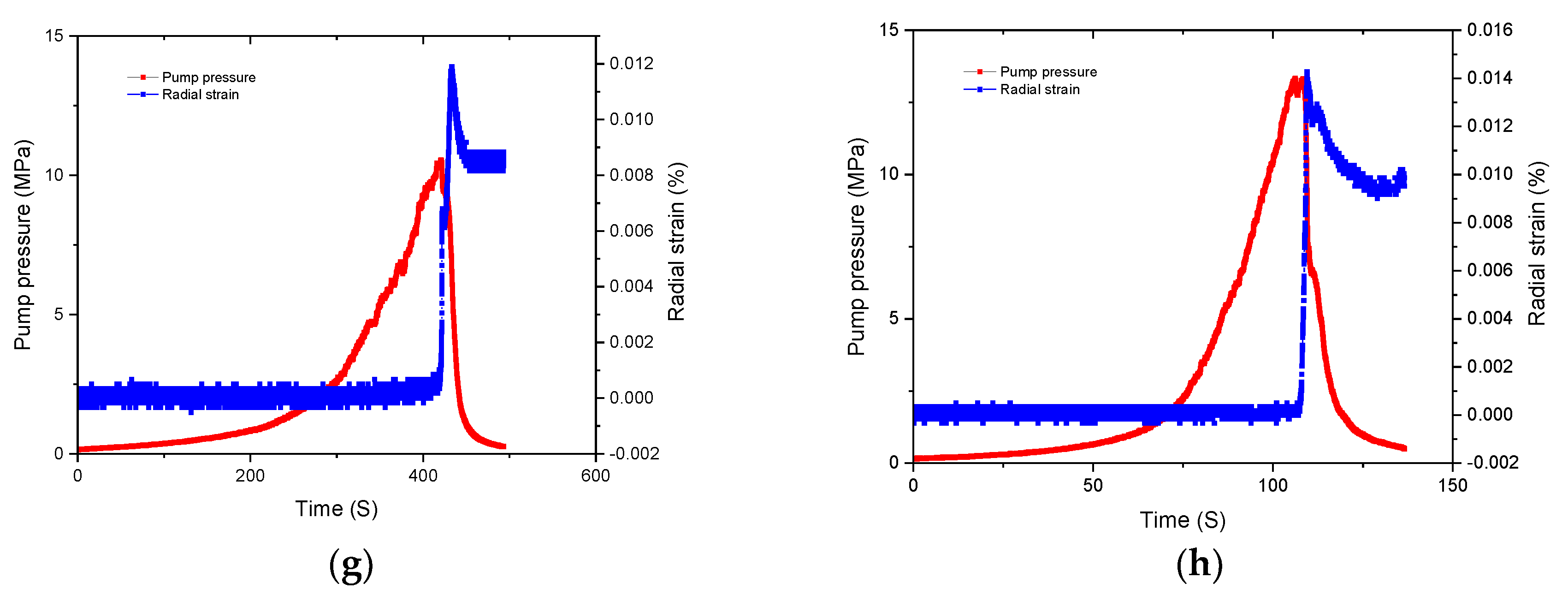

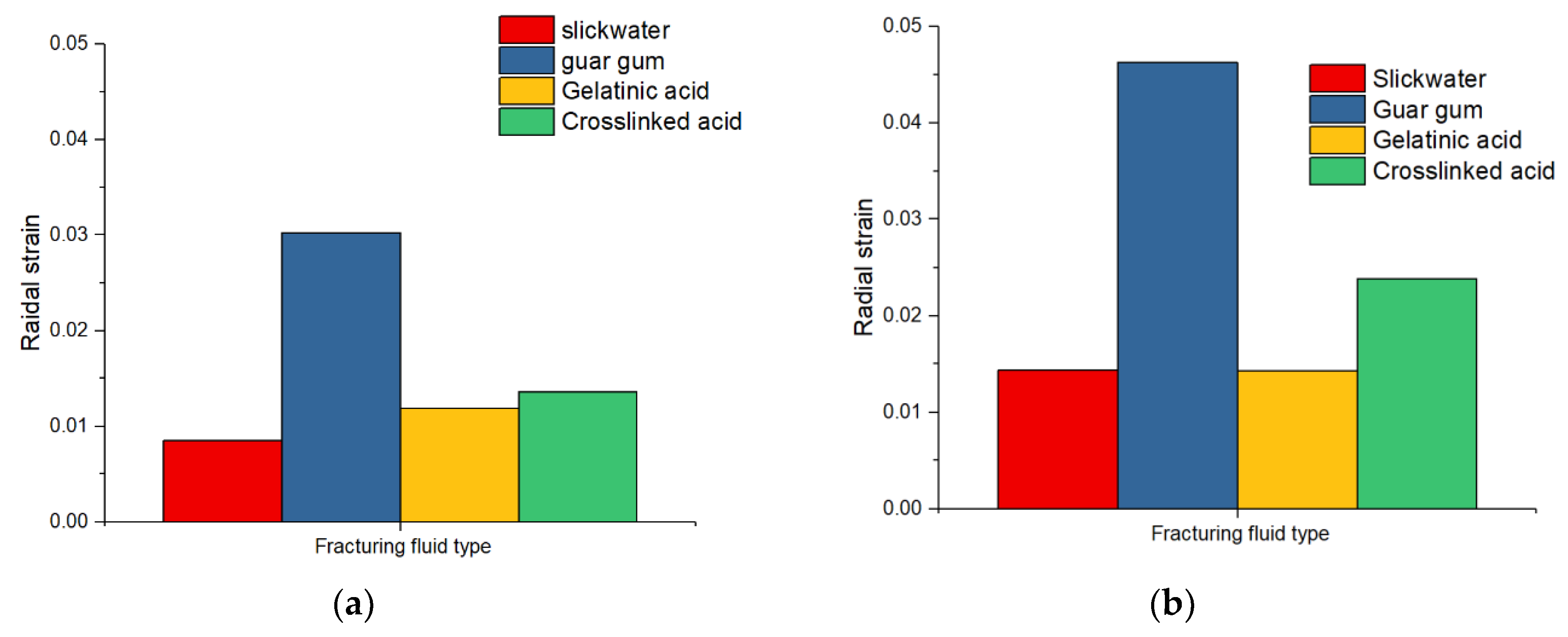

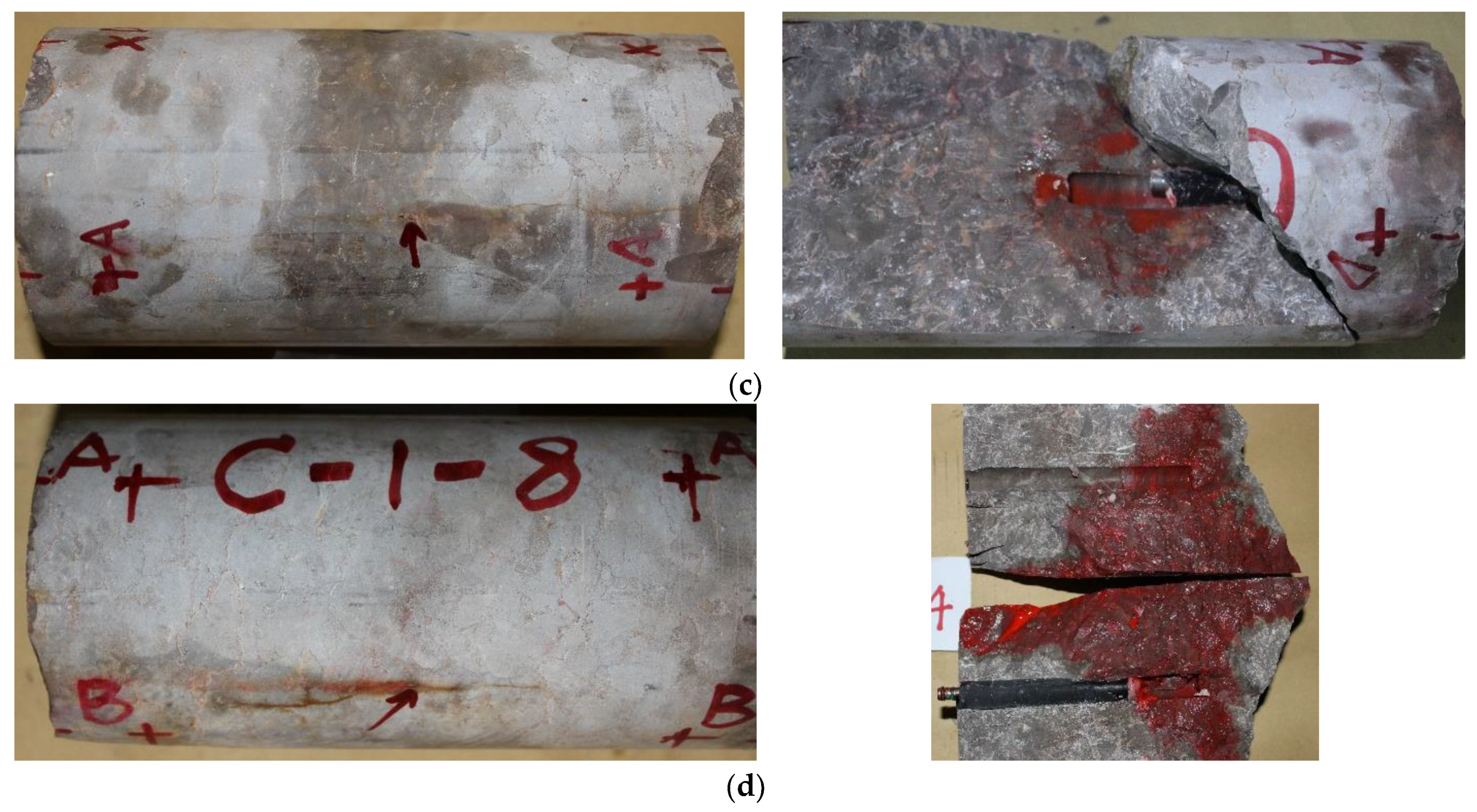

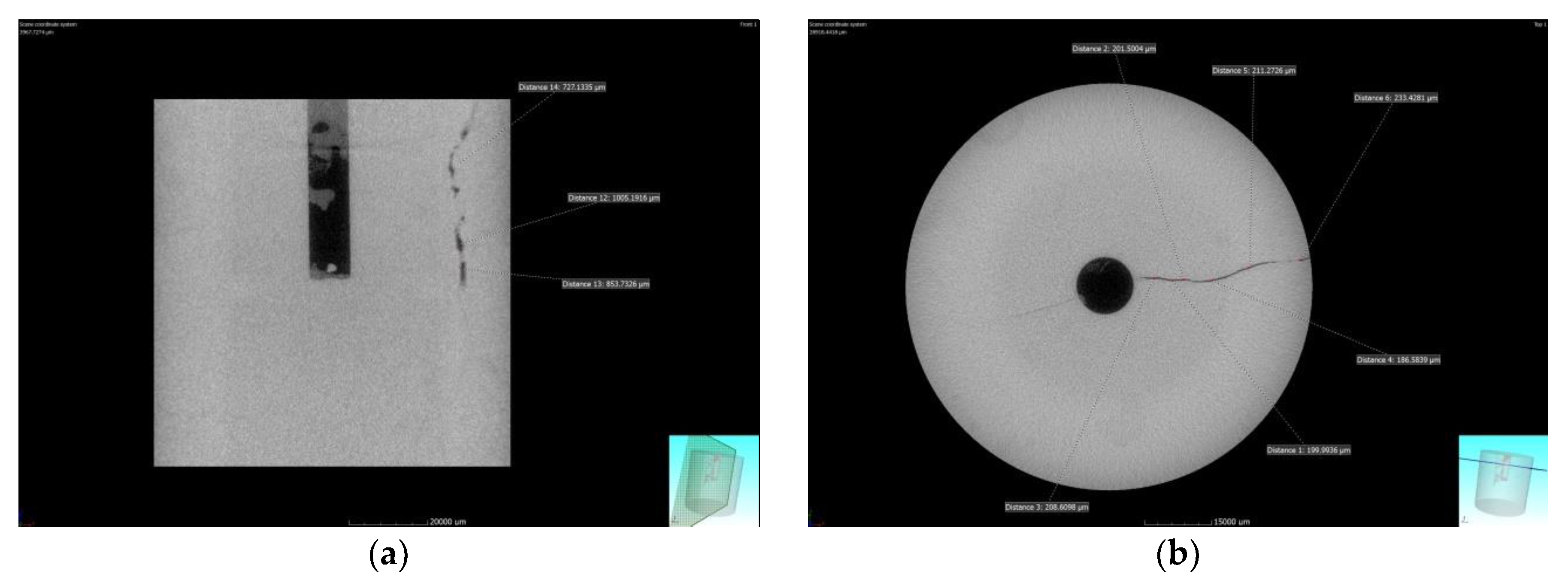
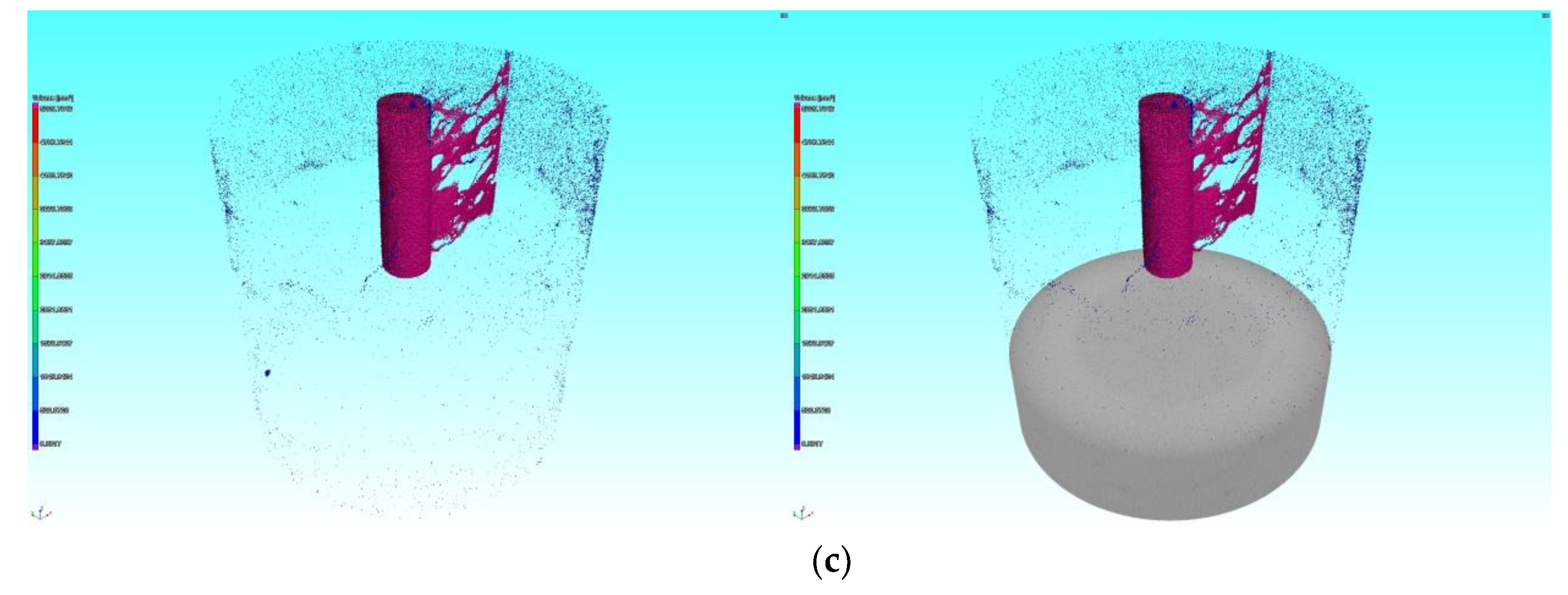
| Young’s Modulus/GPa | 35.59 |
|---|---|
| Uniaxial compressive strength/MPa | 129.34 |
| Tensile strength/MPa | 8.46 |
| Cohesive force/MPa | 27.35 |
| Friction angle | 38.12 |
| Porosity (%) | 3.5 |
| Permeability (Darcy) | 0.004 |
| Poisson’s ratio | 0.192 |
| The average velocity/m/s | 5722 |
| Sample No. | Fracturing Fluid | Pump Flow Rate (mL/s) | σv (MPa) | σH = σh (MPa) | Rupture Pressure (MPa) |
|---|---|---|---|---|---|
| C-2-7 | Slick water | 0.02 | 25 | 0 | 8.34 |
| C-2-8 | Slick water | 0.07 | 25 | 0 | 11.03 |
| C-2-3 | Guar gum | 0.02 | 25 | 0 | 10.31 |
| C-2-4 | Guar gum | 0.07 | 25 | 0 | 12.19 |
| C-1-1 | Cross-linked acid | 0.02 | 25 | 0 | 10.56 |
| C-1-2 | Cross-linked acid | 0.07 | 25 | 0 | 13.34 |
| C-1-7 | Gelled acid | 0.02 | 25 | 0 | 10.36 |
| C-1-8 | Gelled acid | 0.07 | 25 | 0 | 13.04 |
© 2018 by the authors. Licensee MDPI, Basel, Switzerland. This article is an open access article distributed under the terms and conditions of the Creative Commons Attribution (CC BY) license (http://creativecommons.org/licenses/by/4.0/).
Share and Cite
Guo, Y.; Deng, P.; Yang, C.; Chang, X.; Wang, L.; Zhou, J. Experimental Investigation on Hydraulic Fracture Propagation of Carbonate Rocks under Different Fracturing Fluids. Energies 2018, 11, 3502. https://doi.org/10.3390/en11123502
Guo Y, Deng P, Yang C, Chang X, Wang L, Zhou J. Experimental Investigation on Hydraulic Fracture Propagation of Carbonate Rocks under Different Fracturing Fluids. Energies. 2018; 11(12):3502. https://doi.org/10.3390/en11123502
Chicago/Turabian StyleGuo, Yintong, Peng Deng, Chunhe Yang, Xin Chang, Lei Wang, and Jun Zhou. 2018. "Experimental Investigation on Hydraulic Fracture Propagation of Carbonate Rocks under Different Fracturing Fluids" Energies 11, no. 12: 3502. https://doi.org/10.3390/en11123502





